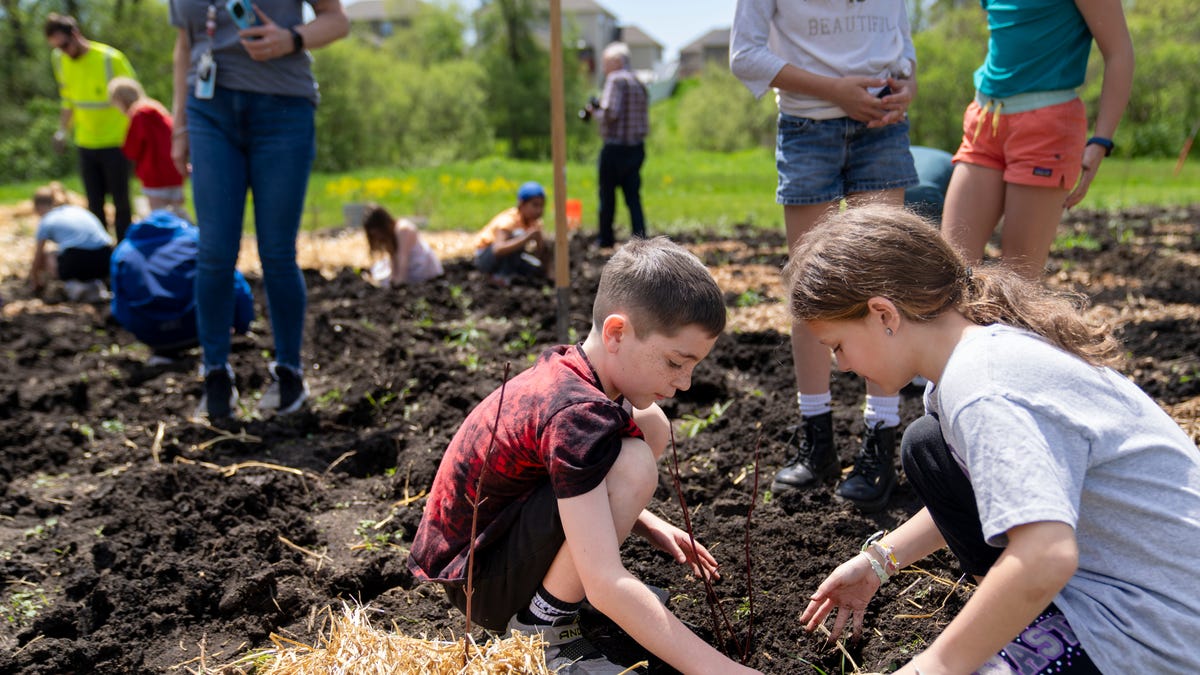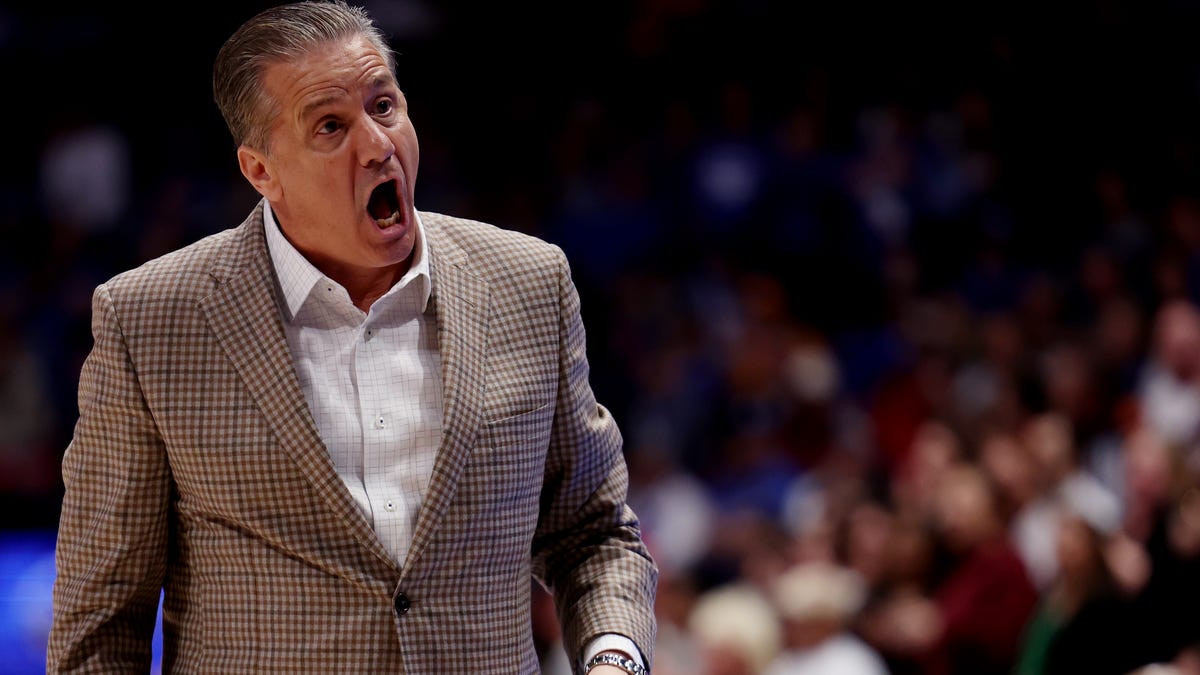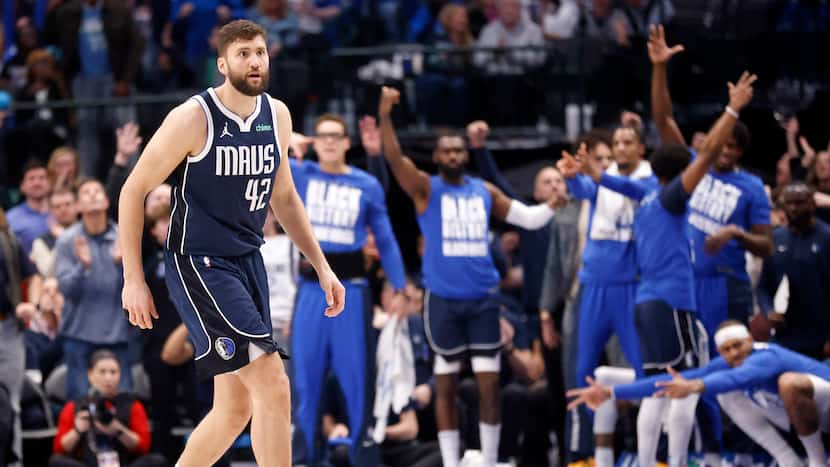Iowa
Iowa State basketball to host Marquette as part of Big 12/Big East Battle in 2024
Otzelberger, King, Curtis Jones talk about Sweet 16 loss to Illinois
Iowa State’s T.J. Otzelberger, Tre King, Curtis Jones talk about Thursday’s Sweet 16 loss to Illinois.
Iowa State basketball has added another marquee opponent to its 2024-25 schedule.
On Thursday, the program announced that it would welcome Marquette to Hilton Coliseum on Dec. 4, 2024, as part of the Big 12/Big East Battle. The Golden Eagles, who were a 2-seed in this year’s NCAA Tournament, are coming off a season in which they finished 27-10 overall and reached the Sweet 16, where they fell to eventual Final Four team NC State. The team finished second in the Big East to eventual national champion UConn.
The Cyclones are a perfect 4-0 in the event, which dates to the 2019 season. All-time, Iowa State is 3-5 against Marquette, but it does hold a 3-2 record in the five games played in Ames. The last meeting between the two squads was in 77-69 back in 2004, a victory that sent the Cyclones to the NIT Final Four.

Iowa
Inside a rural Iowa school district’s fight to save public education • Iowa Capital Dispatch

When Kevin Hosbond was teaching English and coaching speech in the rural southeast Iowa school district of Fairfield, his position was on the chopping block three separate times. Each time, students and parents convinced the school board to save his position.
But in 2017, amidst financial crisis in the district, the Fairfield school board eliminated dozens of positions, including an elementary art position held by Hosbond’s wife. Tired of the disrespect, as Hosbond called it, the two uprooted and moved to Grinnell, a rural town of 10,000 in central Iowa home to Grinnell College.
Hosbond and his wife both took teaching positions at Grinnell-Newburg High School (GHS), hoping to escape the constant threat of budget cuts that loomed over them in Fairfield.
And yet, the budget cuts followed them across 90 miles of cornfields.
Last month, the Grinnell-Newburg school board voted to reduce the district’s budget by $974,331 for next school year. The district serves 1,600 students across five schools.
The cuts include the elimination of 17 staff positions, including cutting a third grade section and two middle-school English teachers. The cuts will also eliminate middle school summer school and reduce bus routes.
Chris Starrett, who has served as school board president since November, predicts next year’s cuts could be even larger. The year after — larger yet.
“I’m not surprised,” Hosbond said of the cuts. “It’s happening in districts across the state.”
Across Iowa, the financing of public education has been in crisis. Des Moines Public Schools is cutting $14 million ahead of next year. Iowa City Community School District approved a $5.5 million reduction. Linn-Mar Community School District slashed $2.5 million and plans to lay off 50 staff members in the process. Cedar Rapids and Ames are the only large districts seeing moderate growth in their budgets.
With the budget challenges statewide, Hosbond said his next move wouldn’t be out of the district — it would likely be out of education.

Grinnell-Newburg public schools face low enrollment, low morale and low certainty about future
Between forced position eliminations and voluntary staff resignations — since January, at least five high school staff members have publicly shared they will not be returning after this school year — the Grinnell-Newburg district is rapidly losing staff members. Among those who are choosing to remain in the district, many said morale is at an all-time low.
At the meeting on March 13 in which the proposed budget for the 2024-25 school year was set to be discussed, the board spent the majority of the meeting discussing the implementation of an unrelated physical education standard before turning to the proposed budget in the final 15 minutes.
Before the board voted on the budget, Hosbond spoke up from the audience, where he was sitting with his wife. “Sometimes things look really good on paper, but in reality, they’re really ugly,” he said.
Chris Grundler, a first-term school board member, replied, “None of this looks good. None of it.”
“Well, we’re making it sound good so we can vote on it,” Hosbond said.

The board approved the budget unanimously. Two of the seven members spoke only when it came time to vote. As the audience trickled out, a few teachers embraced as they cried, some having just learned they would not be returning to their positions next school year.
Directly outside of the GHS library, where the school board meets, colorful banners stand out proudly against the brick wall. One identifies GHS as one of “America’s Best High Schools” in 2020 as found by U.S. News and World Report. Another recognizes GHS for being on CollegeBoard’s AP District Honor Roll in 2017. The walls leading to the gymnasium are lined with row after row of accomplishments in forensics, music and athletics.
Hosbond said GHS is now at an inflection point, stuck at a crossroads between a storied history of success and an uncertain — if not gloomy — future.
Iowa consistently ranked in the top five states nationwide for the quality of its public education as recently as the 90s. Now, U.S. News and World Report currently ranks Iowa’s K-12 education at 13th.
“I love having been a professional teacher in Iowa for all these years, but it’s getting harder and harder for people to come to work every day,” Kent Mick said. Mick has been a public educator for 37 years and has taught history at GHS for nine years.
A video of him urging against the elimination of instructional leaders at the March school board meeting quickly gained over 150,000 views on social media, prompting a handful of state legislators to repost the video with captions regretful of the state of public education in Iowa.
At an emotional school board meeting in Grinnell, Iowa tonight, the board paved the way for nearly $1 million in cuts. The cuts include many teachers and staff. A common refrain: the Legislature and @KimReynoldsIA are to blame. Hear from a teacher. #Iowa #budgetcuts #schools pic.twitter.com/zYOCPNGRwZ
— Zach Spindler-Krage (@zspindlerkrage) March 14, 2024
As he taught his history of music class on April 18, Mick scrawled names of famous bands from the 1960s on the whiteboard as he “nerded out” on artists like Led Zeppelin and Jimi Hendrix. “I had to earn my stripes to teach this course,” Mick said. But Mick said he plans to retire soon, and when he does, he expects that his position will not be replaced, a common example of school districts cutting costs through attrition.
Roger Henderson, who was the vocal director at GHS for 30 years before becoming the liaison between the district and the education department at Grinnell College, said the number of electives offered at GHS — like Mick’s history of music — is disproportionate compared to other schools of GHS’s size. Henderson said he remembers a time in the 1990s when a handful of classes were being taught in temporary mobile trailer classrooms parked next to the main building because course offerings were so high.

In 2005, when the district collected $9 million in funding through a bond issue vote and community donations, GHS significantly expanded its facilities, adding eight classrooms, an auditorium, a gymnasium and athletic facilities. Since then, the community investment in education has been low.
Mick expressed frustration that the severity of the financial situation within the district was not disclosed earlier. “Why is this such an enormous surprise to our staff that we are in this situation?” Mick said. “It should have been public knowledge that we were burning up our spending authority.”
The spending authority formula, which is a concept unique to Iowa public schools, was designed to regulate public school spending and ensure equity across the state. Spending authority limits by statute the maximum amount of money a school district can spend in the general operating fund. The largest component of the budget is based on pupil count and composed of a blend of state aid and local property tax.
According to data provided by Lisa Briggs, chief financial officer for Grinnell-Newburg schools, the district’s estimated annual authorized budget for fiscal year 2023 was $26,782,722. For fiscal year 2024, it is projected to drop to $20,769,967.
Historically, roughly 53% of the district’s funding comes from state aid, with 43% coming from the local tax levy and 4% from federal funds. In Iowa school districts with higher property taxes, state aid makes up a much smaller percentage of the formula, often as a result of higher tax levies or more frequent bond votes. But for Grinnell-Newburg, where 36.5% of students qualify for free or reduced lunch, there hasn’t been a successful bond vote in over a decade. The last attempt in 2018, when the district proposed a $60 million bond, failed with just 43% of the vote.

“Our general fund balance was heading in the wrong direction, and we needed to cut expenditures,” Steven Barber said. Barber is the interim superintendent serving a one-year role that expires July 1.
The school board recently had to settle on selecting another one-year interim superintendent after all three finalists for the permanent position declined their offers. Chris Starrett, school board president, said the district is offering competitive pay, but he hypothesizes finalists have turned the position down because instituting cuts of this magnitude can “be the end of someone’s career.”
“You think I really wanted to go down this road?” interim superintendent Barber said, explaining the difficult situation he was hired into. “But they hired me to do what’s best for Grinnell-Newburg, so I had to take it upon myself to identify a process that was gonna be least painful.”
Barber said he first ensured the budget protected all accreditation requirements stipulated by Iowa administrative code. Then, he looked at counseling, social workers, transportation, custodians and food service to see where he could authorize cuts.
The biggest portion, though, came from reaching out to the principals at each of the district’s five schools — one high school, one middle school and three elementary schools — and asking the principals to identify which positions could be eliminated. Barber said staffing is the typical place to make cuts, since 80-85% of the general fund goes directly toward salaries and benefits.
A few years back, there started to be a very undemocratic…way of doing things on the school board. Things are done ahead of time.
– Suzanne Castello, mom of a Grinnell-Newburg High School student
The administrators used two standards to determine which cuts to recommend, according to Barber. First, what would be least effective to students, and second, what would allow as many current employees to find alternative ways to stay within the district if their current position was eliminated. Barber said he created 50 different budget packages based on the recommendations from principals. He ultimately selected one package to recommend to the school board.
Barber and Starrett, school board president, both acknowledged there was limited public input involved in the decision-making process.
“The majority of our cuts were based off of numbers,” Starrett said. “We, as a board, we really don’t have the time. I don’t get paid to do this. So I’m not going to lie to you that I’ve probably put more time into this than most would, but we really leaned on our superintendent and administration because that’s their job to put together a good solid number of what needs to be done.”
“I was vastly disappointed,” Suzanne Castello, the mom of a GHS student, said, referring to how the school board determined budget cuts and informed the public. “A few years back, there started to be a very undemocratic…way of doing things on the school board. Things are done ahead of time. Public comment is window dressing. There is no back and forth.”
Castello said she has seen the Grinnell-Newburg community regularly mobilize to unseat members of the school board by voting for challengers they think will create a “more responsive board.” The school board has seen particularly high turnover lately. In 2021, three challengers won over the incumbent candidates. In 2023, another new member was elected.
Starrett said the board and school district can improve transparency. “I don’t hold back anymore. You’re going to see all the spreadsheets, I don’t care.”
“And if you have an idea on how to fix those numbers on that spreadsheet, come talk to me,” he said.
Within Grinnell-Newburg, one idea swirling is the potential to build a new school, likely K-5 or K-8. Some teachers and local residents say the new building could dramatically reduce staffing and utilities costs and attract more families into the district, therefore increasing enrollment and funding. On the other hand, some said they worry a new school would require too risky an investment with no promise of it paying off.
Regardless, local residents have not approved recent proposed increases to property taxes, something that would almost certainly be required to build a new school.

State education aid not enough for many public schools across Iowa
The budget crisis affecting Grinnell-Newburg is not exclusive to this district — school boards across Iowa are making similar cuts.
As districts attempt to move forward, many are realizing the problems are largely out of their control.
Because state aid is distributed on a per pupil basis, any drop in enrollment causes a drop in funding. According to documents provided by Briggs, certified enrollment across the Grinnell-Newburg school district fell by 48 students between 2021 and 2022. The following year — between 2022 and 2023 — enrollment fell an additional 50 students. By next year, projections indicate the district could lose another 24 students.
Over the past two years, the state funding rate was approximately $7,600 per student. In that same period, the decline in enrollment of nearly 100 students has caused a nearly $760,000 decrease in state aid for the district.
In an email, Kollin Crompton, deputy communications director for Gov. Kim Reynolds, emphasized that for Grinnell-Newburg, budget cuts are driven by this decreased enrollment and “not because of decreased funding from the Legislature and the Governor.”
Mick said although this is technically true, it is not the full truth. Even though the state is not decreasing funding, Mick said that because the Legislature is increasing supplementary aid at a rate below the rising cost of education, budget cuts are being forced to take place across the state. This is particularly true in recent years when high inflation is driving the cost of education to increase more rapidly than usual.
After missing their deadline and forcing some school districts to determine their budgets without knowing the amount of state funding they would receive, Republicans under the advice of Reynolds approved a 2.5% increase in per-pupil funding this legislative session. The Iowa State Education Association recommended a 4% minimum increase. Mick said 10% would be more sufficient.
Between 1973 and 1993, the supplementary aid increased by an average of 6.42% annually, according to documents provided by Iowa Senate Democratic staff. Over the next 25 years, the annual increase was a mere 2.59% on average, with numerous years of a 1% increase or no increase at all.
“You can disguise it whatever way you want,” Mick said. “But you cannot underfund your public education year after year after year in regards to the cost of public education, versus the amount of money you’re willing to put into it, and then act as if it’s a surprise that schools are in trouble.”
In 2023, Reynolds also diverted an estimated $46 million away from public schools by signing a “school choice” bill that allows parents to take the sum of their child’s per-pupil allotment — now roughly $7,800 after the latest increase — and apply it to private school tuition. According to an Iowa Poll conducted in 2023, just 34% of Iowans favored the law. Iowa Starting Line reported last week that the Legislature committed nearly $180 million in taxpayer funds to support private school tuition next year, almost $50 million more than initially projected.
Barber, who said he opposed the voucher bill, said the effect of school choice has already begun to hit Grinnell-Newburg.
Central Iowa Christian School (CICS), the only private school within the district, enrolls roughly 55 students K-8.
“Typically, they [CICS] had about four or five individuals that started each year,” Barber said. “This year, there are eight kindergarteners that started out there.”

In March, Iowa Citizens for Community Improvement filed an ethics complaint against Rep. Dean Fisher, who represents the Iowa House district that covers Grinnell-Newburg schools, alleging he is attempting to “cash in” on the private school vouchers as a founder and board president of the newly created Tama-Toledo Christian School. The House Ethics Committee dismissed the complaint. Fisher did not respond to a request for comment.
Beyond the impact of state underfunding, Mick pointed out that the state has simultaneously been increasing demands on teachers.
“Every time the state introduces a new mandate and then underfunds, it puts more and more burdens,” Mick said.

Within the last two legislative sessions, Reynolds has signed laws restricting curriculum related to LGBTQ+, social studies, race and sex education. Most recently, Reynolds shifted funding away from Area Education Agencies (AEAs), which, among other services, provide support for families and children with disabilities and special needs from birth through age 21. Reynolds signed the bill despite the majority of Iowans having a favorable view of AEAs.
Just weeks ago, the Legislature voted to allow school employees to obtain permits to carry guns at school.
In a recent move to offer support for educators, Reynolds raised the minimum salary to $50,000 for starting teachers and $60,000 for teachers with at least 12 years of experience, prompting statewide praise. The move may help districts begin filling some of the 1,000 vacant full-time education positions across the state.
Starrett said although he supports the bill, he is worried the state will stop funding the pay increase after a few years.
“I know how the state works,” Starrett said. “They’re going to give us that money to fix our problem for a couple years and then they’re going to go ‘well, good luck. You’re on your own now.’ And then we’re gonna sit here and go — ‘now what the hell do I do?’”
A challenging path ahead for Grinnell-Newburg school district
In the immediate future, the Grinnell-Newburg district faces a difficult situation with low morale, a reduction in staff and more cuts coming down the line. In all likelihood, the district will need to decrease elective offerings and increase class sizes, forcing staff to perform more roles, according to Hosbond.
And for staff members who are being cut, the future may be uncertain. Some are likely to find other positions within the district, Barber said, but others will be forced to leave.
Brianna Maschman, whose director of curriculum position was eliminated as part of the budget cuts, said she is taking a new position as director of secondary education with Davenport Community Schools because Grinnell-Newburg didn’t have other administrative positions for her. She also said she hasn’t been involved in discussions about how curriculum or diversity, equity and inclusion matters will be handled next year without her position in place, so she’s unsure how the district plans to absorb it.
“A budget crisis like this is so much more than the cuts made. It weakens the whole system, kills morale, sows mistrust and leaves people feeling vulnerable,” Maschman said. “I don’t believe the quality of education will decrease because we have an outstanding staff. It will just be much more difficult and the load will be much heavier for those that remain.”
In an email sent to high school choir parents and guardians this month, Michael Gookin, current vocal director at the high school, informed the choir community that he will be resigning at the end of the year. In the email, Gookin wrote he would be remiss if he didn’t mention the “current state of public education in Iowa” as a factor in his decision. He also wrote that “public trust in public education has waned in communities … which is disheartening to me as I look ahead to the future of my career.”

As teachers flee the district, or flee education altogether, Hosbond said filling positions will not be easy.
“There are positions in this district and nearby districts where only one candidate applied,” Hosbond said. “When you have only one candidate, is that your best bet? Not in some cases. It used to be you’d have 20-30.”
The district’s average teacher salary is $56,068, well below the state average of $62,292, potentially making hiring more difficult.
Despite the trying times for public education in Grinnell-Newburg, Mick said he thinks it’s important to realize this issue is not exclusive to any one district.
Iowa ended fiscal year 2023 with a surplus of $1.83 billion in its general fund. Despite the surplus, the state is not increasing education funding. For Reynolds, the surplus indicates state taxes can be further reduced. “Some see a surplus as government not spending enough, but I view it as an over collection from the hard-working men and women of Iowa,” Reynolds said.
“I don’t think you can look at the history of what’s going on in the last 15 years and not think that this is an organized plan to eliminate public education in the state of Iowa,” Mick said, explaining that as long as the state refuses to raise taxes or spend its surplus, education will continue to suffer.
“Public schools are the shining example of what we’re supposed to be as a republican system of democracy. We’re supposed to take care of everyone and take care of everyone’s future in regards to opportunity.”
According to Mick, the once shining example of public education is becoming more tarnished each time policymakers prioritize politics over people. Until that trend is reversed, Mick said, school districts like Grinnell-Newburg face a challenging road — determining how to preserve public education in a state that “doesn’t value it.”

Iowa
A climate change book club needed hope. So, it decided to plant Iowa’s first mini-forest.

A book club that reads about sustainability, climate change and environmental justice got tired of feeling helpless and decided to organize the planting of Iowa’s first claimed “mini-forest” with the help of the city of West Des Moines and a Waukee elementary school.
“It can get pretty depressing and you feel like you can’t address issues,” reading about the topics the club does,” said Diane Ford, a Des Moines member of the book club. “We often feel overwhelmed by moving forward.”
But after reading Hannah Lewis’ book, “Mini-Forest Revolution: Using the Miyawaki Method to Rapidly Rewild the World,” and seeing the author speak at Iowa State University, the club moved forward by quite literally digging in and organizing the planting of a mini-forest at Brookview Park in West Des Moines, near Brookview Elementary School.
A mini-forest should reach maturity in about 15 years, compared to a century or more with a larger forest, Ford said.
That means the community will get the benefits to air, water, soil and education much faster from the stand of 1,200 plantings of Iowa native species in an area about the size of a tennis court, or one-tenth of an acre.
More: For Earth Day 2024, experts are spreading optimism – not doom. Here’s why.
The mini-forest’s started on Friday and was celebrated on site by city and school officials and community members, including Brookview elementary students who helped plant throughout the day.
“This felt like something we could do,” book club member and volunteer Walter Pearson said.
Pearson said the city paid for the seedlings, donated the park land and had staff donate their time, including to auger the holes for the trees and shrubs. Other supporters included the First Unitarian Church of Des Moines, the Waukee school district’s Aspiring Professional Experience high school program, Des Moines Valley Friends Meeting and more than a dozen private individuals.
What trees are in the mini-forest?
West Des Moines City Forester Paul Tauke said the trees in the mini-forest include varieties of oak, pecan, sycamore, hazelnut, birch, elderberry, ninebark, paw paw, maple and black cherry.
The city will water the stand as needed, and volunteers will weed it as needed, Tauke said.
More: New plans for West Des Moines arboretum include 300 trees, museum with crafts, playground
Part of the stand will be fenced in, while a portion will not. Tauke said that’s an experiment to see how necessary it is to have protection from deer and rabbits in order for the mini-forest to be successful.
That matters because he said he hopes the project will inspire private property owners and other schools to do their own planting.
Ann Y. Robinson, a Des Moines member of the book club, said there’s been interest in Ames and Urbandale for mini-forests. Michael Andreski, a member of the West Des Moines Community School District’s Board of Education in attendance at Friday’s event, said his district also is thinking about creating a mini-forest but has not yet picked a location.
What is a mini-forest?
The “Miyawaki Method” of densely planting a small area with native species was developed in the 1970s by the late Japanese botanist and plant ecologist Akira Miyawaki.
The New York Times reported in August 2023 that Miyawaki’s legacy is “transforming dusty highway shoulders, parking lots, schoolyards and junkyards worldwide. Tiny forests have been planted across Europe, in Africa, throughout Asia and in South America, Russia and the Middle East. India has hundreds, and Japan, where it all began, has thousands.”
According to the Times, Miyawaki got the idea from observing how clusters of indigenous trees around Japan’s temples and shrines were healthier than those in plantations or forests grown after logging.
Tauke said the secret to a mini-forest’s quick growth is the competition between the closely planted trees — they can only grow up to find sunlight, not out.
“Whatever grows best will take over the forest,” he said.
People interested in financially supporting or volunteering to take care of the mini-forest in West Des Moines can visit the city’s website at wdm.iowa.gov and search for “Brookview Park,” according to a news release from the city.
Phillip Sitter covers the western suburbs for the Des Moines Register. Phillip can be reached via email at psitter@gannett.com or on X, formerly known as Twitter, at @pslifeisabeauty.
Iowa
Dog and deer take stroll through Iowa town before police intervene: ‘All good walks must come to an end’

In a scene out of a Disney movie, a dog and a deer were seen wandering the streets of an Iowa town together.
The adorable dynamic duo was spotted on Wednesday taking a stroll seemingly without a care through the streets of Tipton, a small town of roughly 3,000 people about 40 miles northwest of Davenport.
“Sometimes a dog just wants to take his deer for a walk,” the Tipton Police Department quipped on its Facebook page.
The post included a photo of the two pals walking along the sidewalk side-by-side. The dog, which appears to be a large golden retriever, looks back in one photo at the police officer creeping up behind them.
The deer even looked like it might be window shopping in one picture, a user commented.
Another image shows the deer walking across a lawn towards the dog, who had stopped for a rest on the grass.
But the unlikely pair’s day out on the town ended soon afterwards. About an hour later, Tipton police posted an update with the animals loaded up in police cruisers after they were rounded up.
“All good walks must come to an end. The pair was too close to traffic,” police said.
“The dog is clearly remorseful but the deer was muttering something about breaking free and doing it all again tomorrow,” the department joked.
-

 News1 week ago
News1 week agoLarry Webb’s deathbed confession solves 2000 cold case murder of Susan and Natasha Carter, 10, whose remains were found hours after he died
-

 News1 week ago
News1 week agoFirst cargo ship passes through new channel since Baltimore bridge collapse
-

 World1 week ago
World1 week agoHaiti Prime Minister Ariel Henry resigns, transitional council takes power
-

 World1 week ago
World1 week agoSpanish PM Pedro Sanchez suspends public duties to 'reflect'
-

 World1 week ago
World1 week agoUS secretly sent long-range ATACMS weapons to Ukraine
-

 News1 week ago
News1 week agoAmerican Airlines passenger alleges discrimination over use of first-class restroom
-

 Movie Reviews1 week ago
Movie Reviews1 week agoHumane (2024) – Movie Review
-

 Education1 week ago
Education1 week agoVideo: Johnson Condemns Pro-Palestinian Protests at Columbia University















